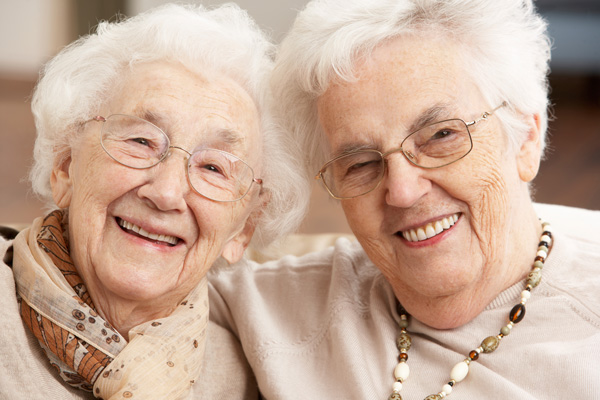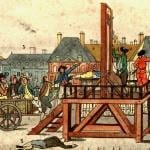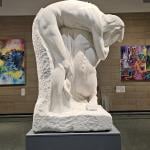 In the past five years several mainline denominations moved to the left, particularly on issues surrounding relationships, homosexuality and gender identity.
In the past five years several mainline denominations moved to the left, particularly on issues surrounding relationships, homosexuality and gender identity.
In 2009 the Evangelical Lutheran Church in America allowed same-sex marriages. Last summer Presbyterian Church (USA) came within a handful of votes of doing the same, but backed away from the cliff at the last moment. Meanwhile, the Episcopalians went completely over the edge at their summer 2012 gathering. They authorized a special rite for homosexual marriages, and lifted the ban on transgender priests. For good measure, they gave transsexuals and cross-dressers a special protected status within the church.
All three denominations report dwindling attendance, budget and staff cuts, and the defection of several large congregations. The Episcopalians (who have lost 23% of their membership in the past decade) are so strapped for cash they decided to sell their headquarters in New York City.
Liberal activists refuse to connect the dots between their doctrinal adventurism and the decline of their churches. For years this merry band of reformers has predicted an influx of younger, open-minded members once all that old-fashioned dogma was scrapped. That influx has yet to materialize. All three denominations are aging rapidly and remain stubbornly white and middle class.
So what’s really going on in the mainline? Why did these churches liberalize in the first place? How has their definition of mission and their understanding of Scripture changed so radically in the past fifty years? Why do some churches become liberal while others do not?
To get some perspective, let’s step back to the heyday of the mainline. In the 1950s and ’60s, these churches were bursting at the seams. Nurseries and Sunday schools were packed. Your local Methodist, Lutheran, Episcopal, Presbyterian or Church of Christ was the place to be. Believe it or not, mainliners were younger than the U.S. population as a whole during the late ‘50s.
Mainline churches were also brimming with men. Lyle Schaller’s 1952 survey found them to be a replica of the wider population of postwar America: 52 percent women, 48 percent men. The governing boards of 1950s mainline churches were boys’ clubs, composed of prominent businessmen, doctors, lawyers, bankers, and professionals.
But with women’s liberation washing over America in the late 1960s, both men and women in the mainline began to ask, “Why aren’t women allowed to lead in the church?” After all, women comprised the majority of church attendees, volunteers and employees (other than senior pastors). Why shouldn’t they lead the institution they dominated at every other level?
So, based on this logic, the mainline denominations began ordaining women – first as elders and deacons, but eventually as pastors, and even bishops. Initially it was just a few.
But as more women stepped forward, more men withdrew.
Here’s a frustrating truth about men: when women step up to lead, men step back.
Most men don’t have a problem with individual women in leadership positions. The shipwreck occurs when women and their values come to dominate a group. If a group or congregation has more than 50% female leaders, men quietly slip out the back door. I call this the baby-shower syndrome. Men do not willingly involve themselves with any activity that’s perceived to be female oriented.
So with men departing the mainline starting in the 1970s, women came to dominate many church governing boards and the thicket of committees that drive denominational work. These women tended to be empty nesters age 50+ who had time to attend the flurry of meetings that mainline governance requires.

Pretty soon denominational committee meetings were bereft of men and young people. They had become family reunions of a sort – middle aged and elderly women who’d known each other for years. Their focus was naturally maternal: caring for the poor, ministering to children, and mutual support.
Once these golden-hearted grandmothers became the driving force in the church, the slide into liberalism was inevitable. There are two reasons why.
First, women tend to be more politically liberal than men. They are more likely to vote Democratic and to support government programs for the poor. Women also support gay rights, environmentalism, gun control and abortion in greater numbers than men.
But there’s a second more subtle reason female-led churches will always move to the left. It has to do with a fundamental difference in the way the sexes see the world. This difference can predict whether your church will become more liberal over time. We’ll discus it in next week’s post.
 David Murrow is the author of the bestselling book, Why Men Hate Going to Church. David’s books have sold more than 175,000 copies in 12 languages. He speaks to groups around the world about Christianity’s persistent gender gap. He lives in Alaska with his wife of 30 years, professional silk artist Gina Murrow. Learn more about David at his Web site, www.churchformen.com, or join the conversation on his Facebook page, www.facebook.com/churchformen. Don’t forget to share this page by clicking on the links below, or scroll down and leave a comment (right below those annoying ads that pay for this blog).
David Murrow is the author of the bestselling book, Why Men Hate Going to Church. David’s books have sold more than 175,000 copies in 12 languages. He speaks to groups around the world about Christianity’s persistent gender gap. He lives in Alaska with his wife of 30 years, professional silk artist Gina Murrow. Learn more about David at his Web site, www.churchformen.com, or join the conversation on his Facebook page, www.facebook.com/churchformen. Don’t forget to share this page by clicking on the links below, or scroll down and leave a comment (right below those annoying ads that pay for this blog).












